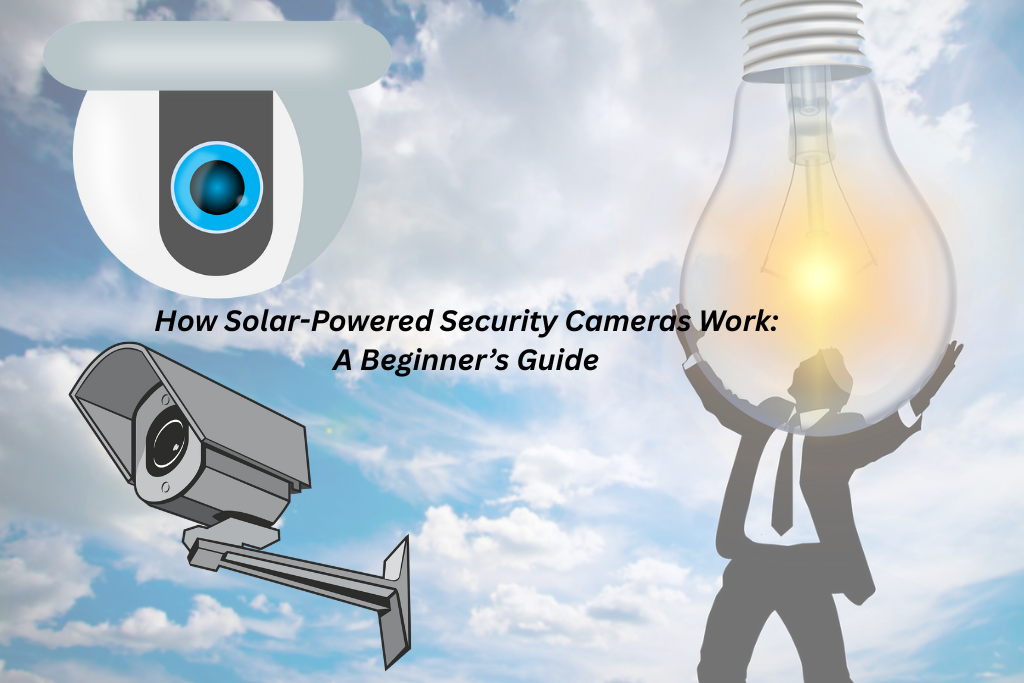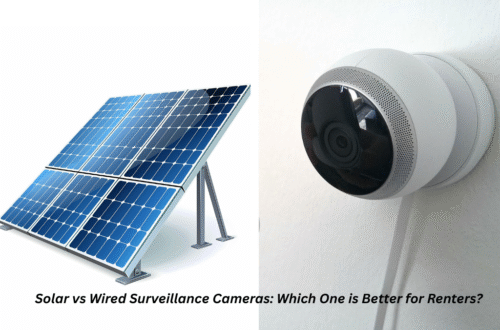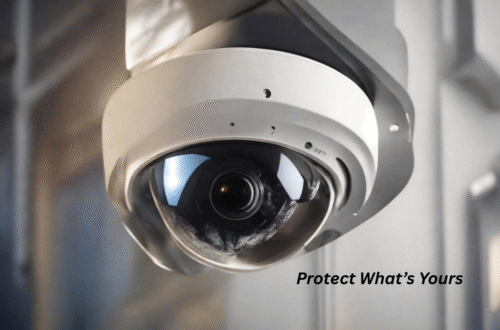
How Solar-Powered Security Cameras Work: A Beginner’s Guide
Solar energy -powered security cameras use solar panels to generate electricity. These cameras do not rely on traditional wiring or multiple batteries. Instead, they get energy from sunlight. They store this energy in a rechargeable battery. This setup allows them to run day by night. They continue to work even during a power outage.
Solar-powered cameras are becoming popular. They are environmentally friendly, cost-effective, and easy to install.
In this guide, we will discuss how solar-operated security cameras work. This also includes their data storage, considerations, and how you can use them with basic technical knowledge.
The main component of solar-operated cameras
Solar-driven security cameras are surveillance tools. They use a solar panel to generate electricity from sunlight. Unlike wired cameras, the solar-driven model does not require electrical cabling. Since the sun continuously charges them, they last longer than traditional cameras. This makes them more flexible and cheaper in the long run.
The main components usually include:
- Solar panels to catch sunlight. These panels convert captured light energy into electricity.
- A rechargeable battery. The battery will store energy for nights or cloudy days.
- A camera unit. This includes a lens, a motion sensor, and recording hardware.
- A connectivity module including Wi-Fi or cellular network to stream footage in your phone or cloud storage.
How do solar panel-powered security cameras do?
Here’s how these cameras work:
Convert sunlight into electricity
Solar panels use photovoltaic (PV) cells. These cells catch sunlight and turn it into electrical energy. When the sunlight hits the panels, these cells generate direct streams of electricity. It flows through the current camera’s power system and provides energy to operate.
Role of rechargeable battery
When there’s no sunlight, these cameras use built-in rechargeable batteries. During the day, the solar panel not only powers the camera but also charges the battery. At night or on cloudy days, the battery ensures the camera continues to run smoothly.
Power Management in Low-Sunlight Conditions
During winters or cloudy weather when sunlight is limited for days, these cameras manage power carefully. Many models reduce energy use. They adjust motion detection sensitivity or enter standby mode when no activity is detected. Some cameras also reduce video quality. As soon as the panels receive enough sunlight again, they recharge the battery and restore full operation.
Connectivity and Data Storage
Consider the connectivity and data storage factors to make sure your captured footage is safe.
Wi-Fi vs. 4G/5G Cellular Models
Most solar-operated cameras connect with Wi-Fi. This makes them ideal for places with stable internet access. On the properties where Wi-Fi is not available, some models use 4G or 5G cellular networks. These cellular cameras rely on a SIM card and mobile data
Local SD Card vs. Cloud Storage
The recorded footage has to be stored somewhere. Many cameras use microSD cards for local storage. It is cost-effective and works even without the internet. Others use cloud storage, where videos are uploaded to secure servers. Cloud storage usually offers remote access. It has a longer storage time and backup protection if the camera is damaged or stolen. However, the drawback is that it may involve monthly fees.
Live Footage Through Apps
Modern solar energy-powered cameras come with apps. You can see live footage, get motion alerts, and adjust the settings from anywhere. This makes these cameras both practical and assured.
What are the Potential Limitations When Installing Solar-Powered Security Cameras?
Although these cameras seem like the best option for both property owners and renters, they do have some limitations to take care of.
Cloudy or Shady Areas
These cameras have issues of performance in clouds or shady areas. Since these cameras require sunlight to charge their battery. Therefore, if they are installed in heavy shaded spots or cloudy areas, their performance may fall.
High Initial Cost
These cameras often have more initial cost than traditional models. However, they save money over time because you won’t need professional wiring. You will also be saved from extra power and frequent battery replacements.
Network Coverage Issues
To see the footage remotely, your camera still requires a stable internet or cellular connection. In areas with weak Wi-Fi or poor mobile network coverage, remote access may be limited or delayed.
Maintenance Issues
To keep them working well, you will need to occasionally wipe dust or debris off the solar panels. This also includes checking the battery’s condition. While this is not complicated but skipping maintenance can reduce charging efficiency and shorten the system’s life.
Recommended Scenarios
Solar-powered security cameras are great for:
- Homes and rental properties where wiring is a challenge
- Farms, ranches, and open fields
- Construction sites that change layout often
- Vacation cabins or remote storage units
- Parking lots or garages without easy power access
Installation Tips for Beginners
Maximum Sunlight
Mount them at the ideal place. They should get maximum and direct sunlight during the day. The spots that usually work best are south-facing in the Northern Hemisphere and north-facing in the Southern Hemisphere. These spots get all-day exposure at these spots.
Avoiding Obstructions
Avoid the areas where the shade of trees, roofs, or tall buildings. They create partial shade for a few hours. These obstructions reduce the charging efficiency of batteries. Ensure that the solar panels have an unobstructed view of the sky.
Angle Adjustment
The angle of the sun changes throughout the year. That’s why you need to adjust your panels during different seasons. If it is possible for you, then adjust the tilt of the solar panel a couple of times a year. By doing so, you can keep it facing the sun more directly, which helps it charge faster.
Safety Precautions
Use a stable ladder or hire a professional if the camera will be mounted high. Wear gloves and make sure that all mounting hardware is secure. This is to prevent the unit from falling in bad weather. Avoid working in wet or windy conditions for safety.
Conclusion
If you are thinking of upgrading your security system, here’s how to do it. Start by assessing your needs and budget. After that, evaluate the amount of sunlight your property gets. This also includes the size of the area you want to cover and the type of connectivity you have. Then compare the different models that are compatible with your setup.
FAQs
How do solar-powered security cameras work?
These cameras work by using solar energy. The panels use sunlight to form electricity to run the cameras. These cameras come with battery storage to store energy for nighttime.
Can solar cameras record 24/7?
Yes there are some advanced solar cameras. These cameras have Always On Video mode.
Can I run a solar-powered security camera without Wi-Fi?
Yes, you can run these cameras without Wi-Fi.




